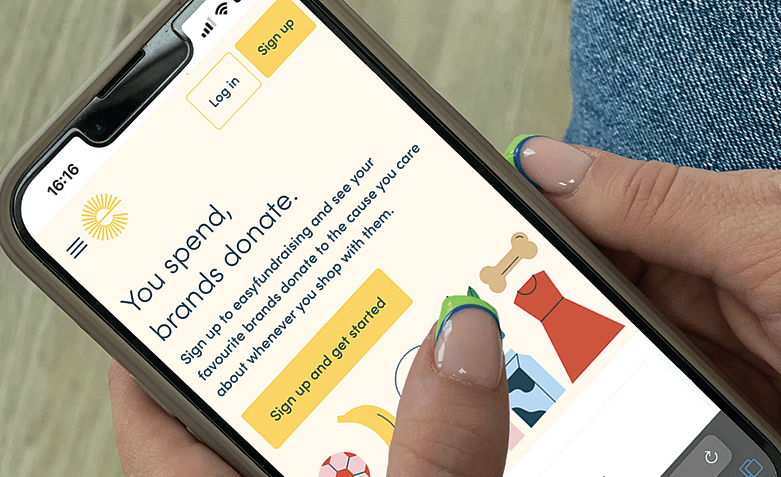
The Power of Storytelling in Fundraising
Stories aren’t just a way to inspire and entertain your audience. They also bind us, framing goals and motivations we can buy into. Even the clearest, most urgent facts need a narrative to raise cash for a cause. If you’re running a fundraising campaign, it’s crucial that there’s a story at the heart of it that your potential donors can resonate with.
Put yourself in a donors’ shoes. There are so many crowdfunding causes to consider — everything from environmental campaigns, homeless shelters and healthcare research to start-up costs for small businesses or creative projects. If you aren’t hooked by its origins, aims or stakes, you’ll fail to see why one crowdfunder deserves your cash over another. Emotional pleas and intelligent rationales must work harder than ever to grab someone’s attention and keep it.
Telling a story for crowdfunding success is rarely easy, but we’re here to help. With an irresistible narrative and simpler donation models, you’ll cover all bases for drawing support, sparking interest and growing your donor list. Mainly, we’re covering philanthropy here, but you can take these lessons for any crowdfunding exercise.
Crafting Your Fundraising Story
What stories do you love? Chances are they have an interesting protagonist, a specific context and sharp lines between cause and effect. You might want to approach the first stages of telling a crowdfunding story by:
Defining Your ‘Why’
Without the why, the what, when or how ceases to matter because no-one will read that far. So, find the crux of your campaign: the ultimate reason for not only its existence, but also the pressing concern of why it’s important, right now.
Perhaps you have a personal connection to it. Has an issue affected you or someone you know? Did a special moment change everything you thought you knew about the world? First-person narratives are dynamite for relatability. The more perspectives we learn about, the more empathic we become, which can only help your fundraising efforts from the outset. Take your reader back to a time, place and challenge that fired this cause close to your heart.
Conversely, you might just have an enormous interest in the subject — especially if it’s aligned with your company’s values. Explaining your activities and how you’re pushing a more tangible impact in the world (beyond the company’sESG commitments, for example) adds credibility to your message. Wherever you can, be specific. Discuss the ethics behind your organisation and what you’ve done so far to achieve them. The why can be a major part of your differentiation from businesses that are selling or serving the same interests.
Telling a Relatable Story
When it comes to resonance — which is to say, making your crowdfunding story felt, as well as proven — there are a couple of techniques to explore when writing your bio and marketing materials. For example, you can:
- Deploy a rhetorical question. What should your audience be asking themselves? Phrases such as “What can we really do?” and “In the end, what matters?” give your copy space to breathe and leave an impact. The effect is multiplied when you end a paragraph this way.
- Get rid of passive language. For instance, compare “The cause of the condition was determined” versus “We found out what was wrong”. The first is clinical, vague and impersonal. The second places the reader right amongst your thought process. So, prioritise direct speech and verbs.
- Don’t be afraid of adjectives or adverbs. “Scared”, “troubled”, “excited”, “amazed” and “deeply” deserve just as much space as the facts on the ground. You’ll add more emotional weight when you use them sparingly.
- Contrast one situation and another. It shows that you’ve assessed how bad things might get in addition to the improvements you want to see.
Sharing the Impact

Coming up with a solid crowdfunding story is merely the beginning. You should also leverage the initial description and marketing channels to explain what you’ve done so far and how much you’ve raised. To that end, we recommend:
Highlighting Past Success
Again, specifying what you’ve managed to do with the campaign is crucial to showing how far a donation might go. Crowdfunding pages usually have a meter displaying donations and the target goal. It’s a great visual, but you can go further by bulleting your successes, describing the communities you’ve helped, the lives you’ve saved, families you’ve supported or any other metric that ties into your ambitions. Update them as you progress.
Quotes are useful, particularly from the recipients of your goodwill or entrepreneurship. Their stories can be woven into your own. You can complement them with individual narratives from the people who’ve assisted your goals so far – whether they’re employees, community members, family or corporate partners.
Painting a Picture of the Future
Describing your successes is one challenge, but admitting what you have left to accomplish is quite another. Newsletters, brochures and crowdfunding landing page bullet points must explain what your perfect world looks like. More importantly, they should outline how cash will take us there. Therefore, consider attaching a fiscal value to parts of your request, saying where the funds will go and how they’ll be divided over time.
Stay realistic. Avoid overpromising or becoming too vague. Your crowdfunding page could also have a list of donation rewards based on how much they’re able to give. For instance, you might want to offer a ‘thank you’ media pack for any charity payments over £100, and a free professional service (such as a quote) for members who donate more than £1,000 in a year.
Storytelling Through Different Channels
Spreading your story is the final piece of the crowdfunding puzzle. What tools and platforms can you use to lure donors cost effectively?
Social Media
Whether you’re spotlighting quotes, targets or achievements, social media is a great way to share snippets of your crowdfunding journey. Initially, you’ll want a campaign hashtag and a brand guide for visualising and writing about your efforts.
Once they’re created, it’s time to plan a content calendar i.e. the schedule you’ll use for crowdfunding posts. Once or twice a month may be enough, as you shouldn’t overwhelm people. But equally, don’t be afraid to post about a surprising development ad hoc, or to double or triple your posts in the run up to a fundraising deadline.
easyfundraising

We couldn’t leave you without mentioning our own platform’s pitch-perfect solution for charitable crowdfunding!
To bolster your fundraising efforts, all you need to do is set up your fundraising initiative as one of our good causes. You can create your own easyfundraising cause page and start collecting donations (just remember your storytelling when you set up your page).
Then, all your supporters need to do is sign up to a personal easyfundraising account and shop online with any of our 7,500+ partner retailers. If they select you as their chosen cause, the retailer will make a donation to you out of the money your supporters spend. It doesn’t cost you or your them anything.
You can leverage easyfundraising throughout your crowdfunding campaign, adding us to your main page, corporate website and communications. We also provide you with a handy ToolKit that includes email, social media and WhatsApp templates to help get your message out there.
What Stories Will You Tell with Crowdfunding?
Hopefully, you have the confidence to craft your own narrative and carve a place in the world, revealing what needs to change. Remember — context, emotion, relevance and specificity are all key to incentivising donors, turning casual observers into an audience with their own part to play. And don’t forget to use easyfundraising as an extra way to get your message out there and bolster your fundraising efforts.
